The Most Common Pests and Insects That Harm Trees
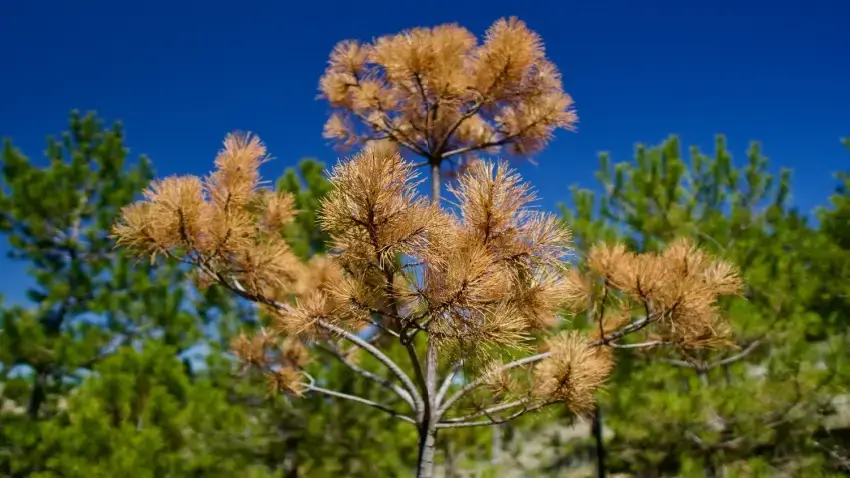
Trees add beauty, variety, and character to your landscape, not to mention lovely shade in the summer. However, insects and other pests could be eyeing your trees, looking for their next meal or permanent residence. Canada is home to many different insects that harm trees. In order to protect your tall, stoic beauties, it’s important to know the signs of a pest infestation and the most common bugs that kill trees in Canada.
Table of Contents:
Identifying Damage from Tree Pests
The first step in keeping your landscape safe from bugs that kill trees is to be able to identify damage from insects as soon as possible. The earlier you notice signs of infestation, the faster you can take action and limit the damage. Early detection could make the difference between saving a tree or watching it wither away and eventually die. Look for common signs, including:
- Leaf discolouration and deformation
- Premature leaf drop
- Holes in leaves, bark, or wood
- Sticky substances on leaves or branches
- Abnormal growths on leaves, twigs, or branches
- Sawdust-like material
- Webbing or silken tents
- Chewed or skeletonized leaves
- Dieback of branches
If you notice evidence of a pest infestation in your trees, the next step is to identify the pest so you can determine the best course of action to properly treat and save your trees from further damage.
Sap-Sucking Insects
These pests feed on tree sap, which is the lifeblood of your trees. This often causes damage to foliage, twigs, and branches.
Aphids
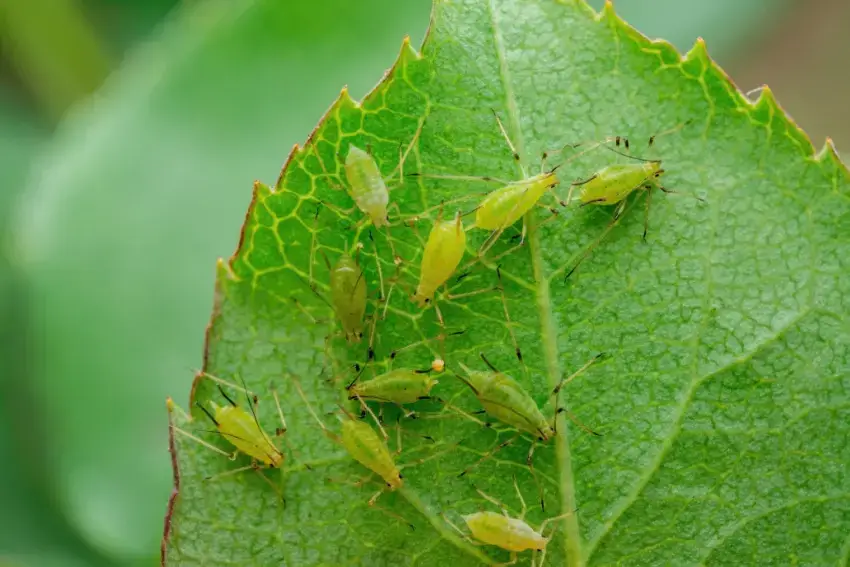
Found throughout Canada, aphids are small, soft-bodied insects that use piercing-sucking mouthparts to feed on plant sap. They have a particular appetite for deciduous and coniferous trees and can cause leaf distortion and stunted growth. They typically feed in large groups on the undersides of leaves, stems, or branches. Their calling card is a sticky substance they secrete called honeydew.
Scale Insects
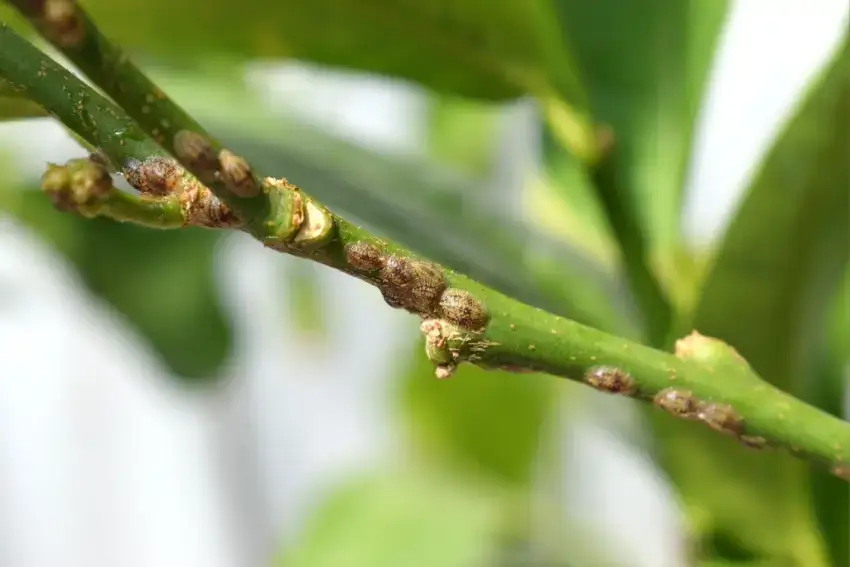
These small, immobile pests are found in most regions of Canada and attach themselves to bark, leaves, or the fruit of trees. They feed on the sap of many tree species, including maples, oaks, and fruit trees. Scale insects can cause leaves to yellow and wilt and branches to die back. In some cases, large infestations cause enough damage to kill the tree. They can also be difficult to spot due to a waxy covering they secrete over their bodies for protection. If you suspect a Scale insect, seek professional advice to confirm the type of insect you’re dealing with.
Spider Mites
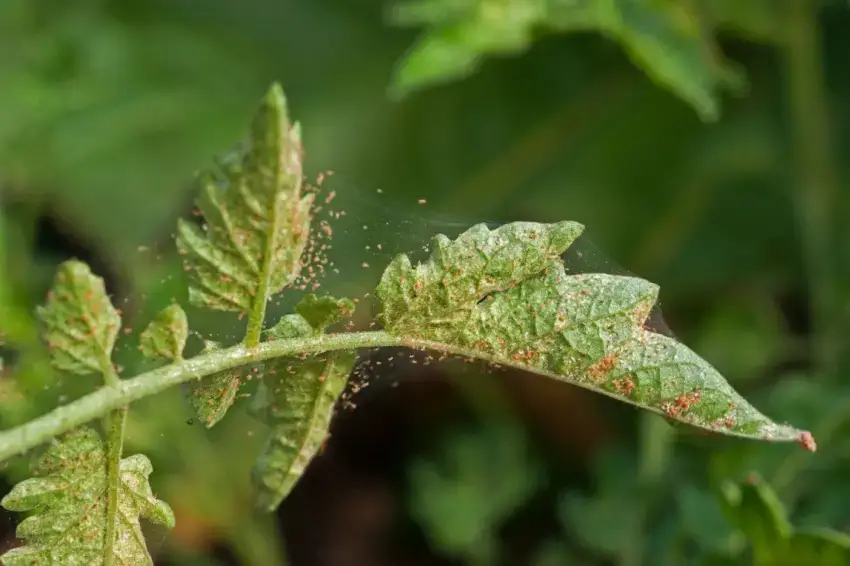
These tiny, spider-like arachnids are often found in parts of Canada with hot, dry conditions. They feed on plant cells, which can cause stippling or yellowing of leaves, premature leaf drop, and branch dieback. They often prefer to congregate on the undersides of leaves, creating fine webbing that you may be able to see when an infestation gets bad. Spider mites have a wide palette and will be happy to munch on many different types of trees as well as other plants.
Wood-Boring Insects
Wood-boring insects are another type of bug that kills trees in Canada. They lay their eggs in tree bark, and the larvae tunnel through the bark, feeding on the tree as they go. If left untreated, they can cause extensive damage, which can eventually kill the tree.
Emerald Ash Borer
.webp)
A common pest of trees in Ontario, Quebec, Manitoba, and parts of the Maritimes, the emerald ash borer (EAB) is an invasive beetle that primarily attacks ash trees. EABs are metallic green in colour, and their larvae dine on the inner bark of ash trees, interrupting the tree’s ability to transport water and nutrients. If you notice an EAB infestation, you’ll need to act fast to save the tree. These nefarious beetles can quickly harm, and even kill the trees they target.
Bronze Birch Borer

This tree pest is native to Canada and, as the name suggests, prefers to attack birch trees. Another type of beetle, bronze birch borers (BBBs), are small, slender, and bronze in colour. Their larvae feed on the inner bark and sapwood of birch trees, creating winding galleries that disrupt the tree’s vascular system. They can cause branch dieback, a thinning canopy, and, eventually, tree death.
Asian Long-Horned Beetle
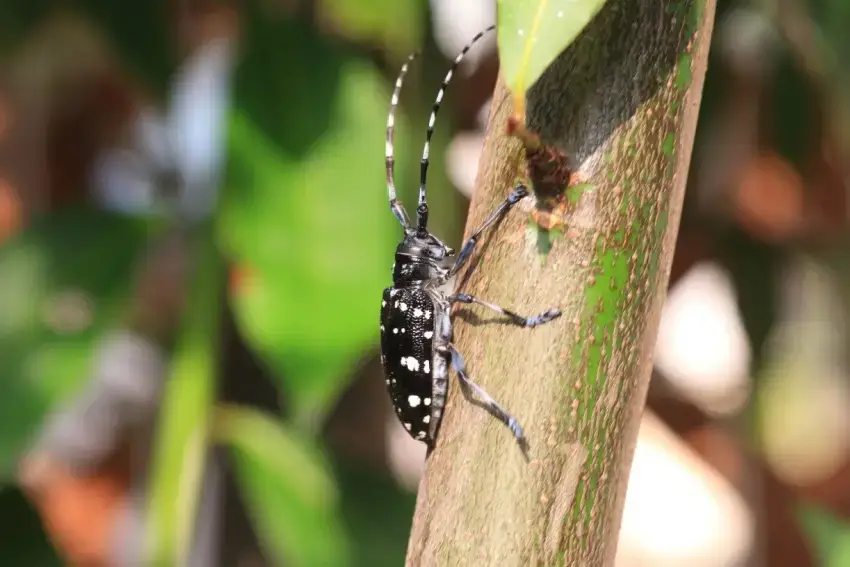
The invasive Asian long-horned beetle (ALB) poses a serious threat to a range of hardwood trees in parts of Ontario and Quebec. Adult beetles are black with white spots and can grow up to 35 mm long. You can often identify them by their distinctive, banded black and white antennae. ALB larvae bore deep into the heartwood of trees, causing structural damage and disrupting the tree’s vascular system. Infested trees can show signs of dieback, yellowing leaves, and exit holes in the bark.
Leaf-Eating Insects
Leaf-eating insects may not seem as dangerous as sap-sucking and wood-boring insects, but they can quickly defoliate trees, which can limit a tree’s growth and hurt its overall health.
Forest Tent Caterpillar
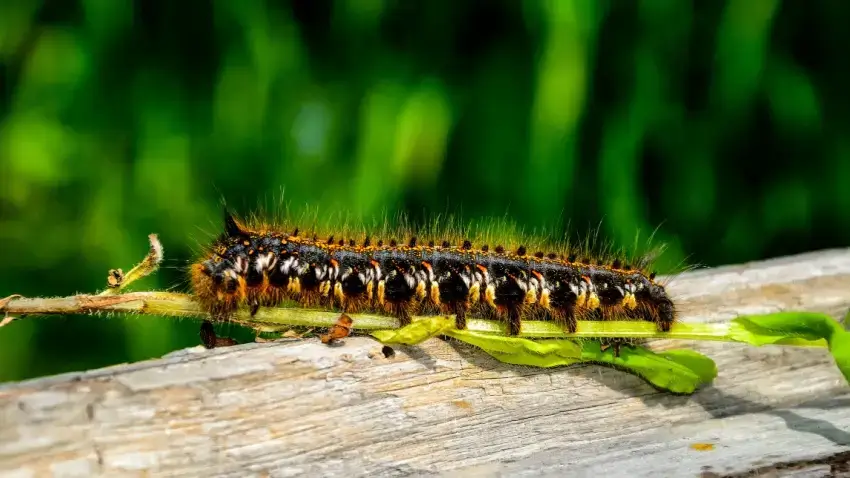
Found most often in boreal and deciduous forests, forest tent caterpillars are native to both Canada and the U.S., and cause significant defoliation. In fact, they are the most widespread defoliator of hardwood trees in North America. These caterpillars are blue-black in colour with white keyhole-shaped spots along their back. Outbreaks of this tree pest occur cyclically every 10 to 12 years and can last for three to six years. During an outbreak, the caterpillars gorge on leaves, particularly poplar, aspen, and maple. Repeated attacks can limit a tree’s growth and increase its susceptibility to other stresses and diseases.
Eastern Tent Caterpillar
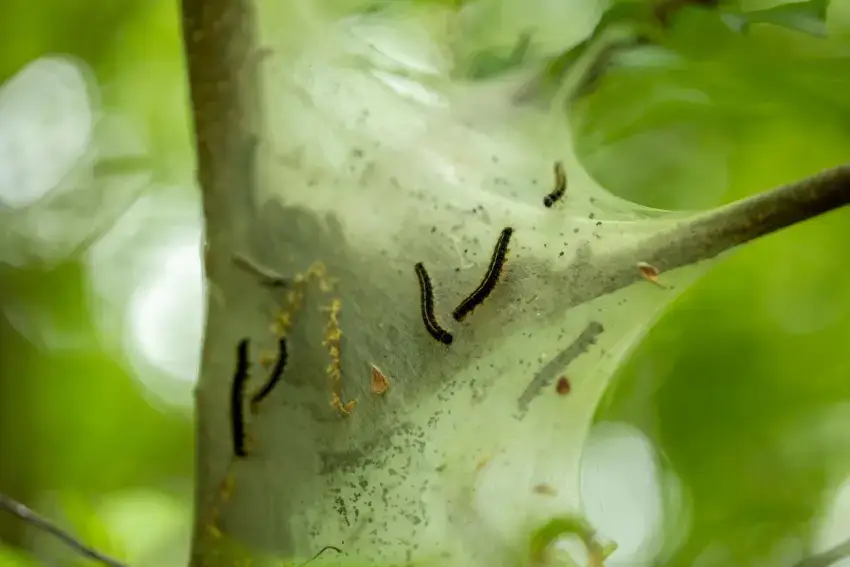
As the name implies, the eastern tent caterpillar is found mostly in Eastern Canada. These hairy, black caterpillars have a white stripe down their backs and blue and yellow spots along their sides. They build distinctive silk tents in the forks of tree branches, which they use as shelters and feeding sites. Eastern tent caterpillars primarily feed on the leaves of cherry, apple, and crabapple trees but can also attack other hardwoods. Heavy infestations can cause defoliation and weaken trees, making them more susceptible to other stressors and diseases.
Gypsy Moth
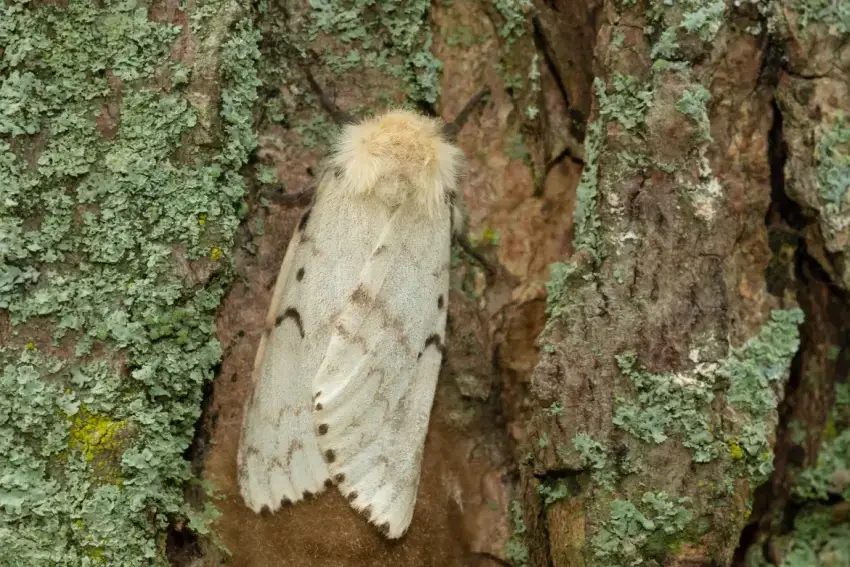
Gypsy moths are an invasive species that is now a common pest of trees in Ontario, Quebec, and the Maritimes. Gypsy moth caterpillars are hairy, big (60 mm in length), and showcase distinctive red and blue spots along their backs. They feed on many different trees. During large outbreaks, they can defoliate trees, causing significant stress. Like other leaf-eating insects, gypsy moths tend to strike in regular cycles that can last for several years.
The Prevention and Management of Insects that Harm Trees
Just hoping your trees will be safe from the effects of harmful insects is not enough. You have to take proactive steps to ensure your trees remain healthy and thrive. A proactive approach to tree care and maintenance will not only prevent pests in your trees from inflicting extensive damage, by managing small infestations early before they grow out of control you will keep your trees healthy and strong.
Here are some steps to safeguard the trees in your yard:
- Maintain tree health all year round: The most important way to help your trees resist pests is to keep them healthy throughout the year with proper watering, fertilization, and pruning. Make sure you water and fertilize according to the needs of each tree species. In some cases, overwatering can cause as much damage to a tree as not enough water.
- Monitor your trees: Keep an eye out for any signs of tree pests and infestation. As mentioned, some pests are more aggressive than others, so early detection is critical to prevent long-term damage.
- Keep your trees clean: Don’t let tree branches become overgrown. Fallen leaves, branches, and other debris can become a breeding ground for pests. Keep your trees and the areas around your trees tidy.
- Plant diverse trees: If you’re just creating your landscape, plant a variety of different types of trees on your land. Monocultural landscapes are more susceptible to pest outbreaks.
- Stop small infestations with selective pruning: If you notice a small infestation of your tree, try selective pruning of the infected branches to stem the spread.
- Chemical control: For larger infestations, contact a landscape professional who will use targeted insecticides to eliminate the threat.
- Get professional help: If you aren’t able to perform regular tree maintenance on your own or you need help with an ongoing infestation, contact a professional landscaper who has experience in tree care and managing pest infestations. A professional will quickly identify the insect and take the appropriate action to return your tree(s) to good health.
Keep Your Trees Healthy and Thriving
The best way to prevent long-term damage and save your landscape from insects that harm trees is to act quickly when you see a problem. One of the best things you can do to protect your trees is simply to perform ongoing maintenance. This includes periodic inspection of tree branches and the tree trunk to identify any issues early. Once an infestation of bugs that kill trees is underway, take immediate and decisive action to stop it from spreading.
The experienced pros at The Grounds Guys® have the knowledge and training your trees need when they are under attack. We have teams located throughout Canada who are well-versed in tree management and care. We perform tree maintenance to keep your trees healthy and strong. We can also address ongoing infestations with targeted tree care services. Our teams can also perform lawn care, garden care, and seasonal services to keep your landscape looking its best throughout the year.
To get started, request a free estimate today.
 Click to call
Click to call


